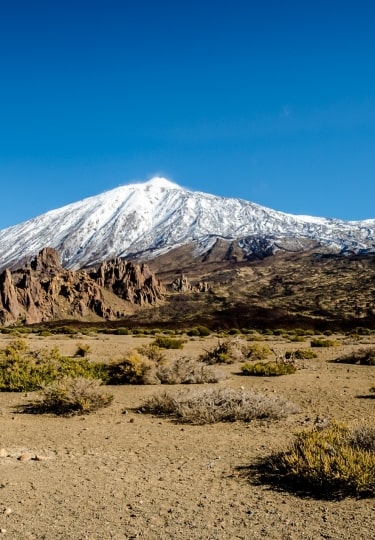The Canary Islands in winter are glorious. This volcanic archipelago lies off the southwest tip of Morocco in the Atlantic Ocean, around 62 miles from the African continent at its closest point, basking in year-round sunshine.
Made up of seven rugged islands, including Tenerife, Gran Canaria, and Lanzarote, the Canary Islands experience warm daytime weather and mild evenings during winter. The islands have the perfect climate for swimming, sunbathing, and exploring charming towns and natural landmarks.
From sun-drenched vineyards to deserted beaches, if you are considering a trip to the Canary Islands in winter, here’s what to expect.
Warm Weather & Long Sunny Days
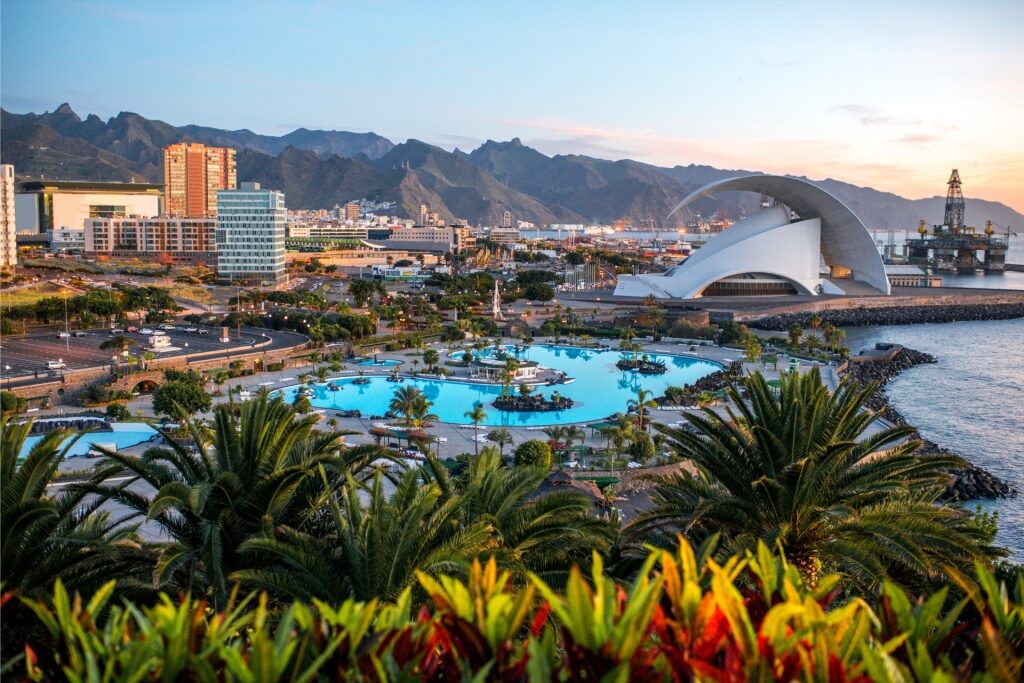
Santa Cruz de Tenerife
The weather in the Canary Islands in winter is delightful, with highs of around 70°F, meaning you can pack summer dresses and beachwear. It rarely rains, which means you can also enjoy sightseeing, sunbathing, and sipping on local wines without getting caught out in downpours.
Evenings become milder, which means you might want to pack a pashmina or light jacket, but the temperature is still warm enough to enjoy alfresco dining under the moonlight. Leave your thick coat and heavy sweaters at home unless you plan to travel to the summit of Tenerife’s Mount Teide, which is often capped with snow in winter.
These subtropical islands receive over 3,000 hours of sunshine every year. With long days of sunshine on the cards, the Canary Islands in winter offers travelers the chance to pack plenty in. You could opt for wine tasting in Lanzarote’s Geria Valley in the morning followed by a drive through the island’s Timanfaya National Park in the afternoon.
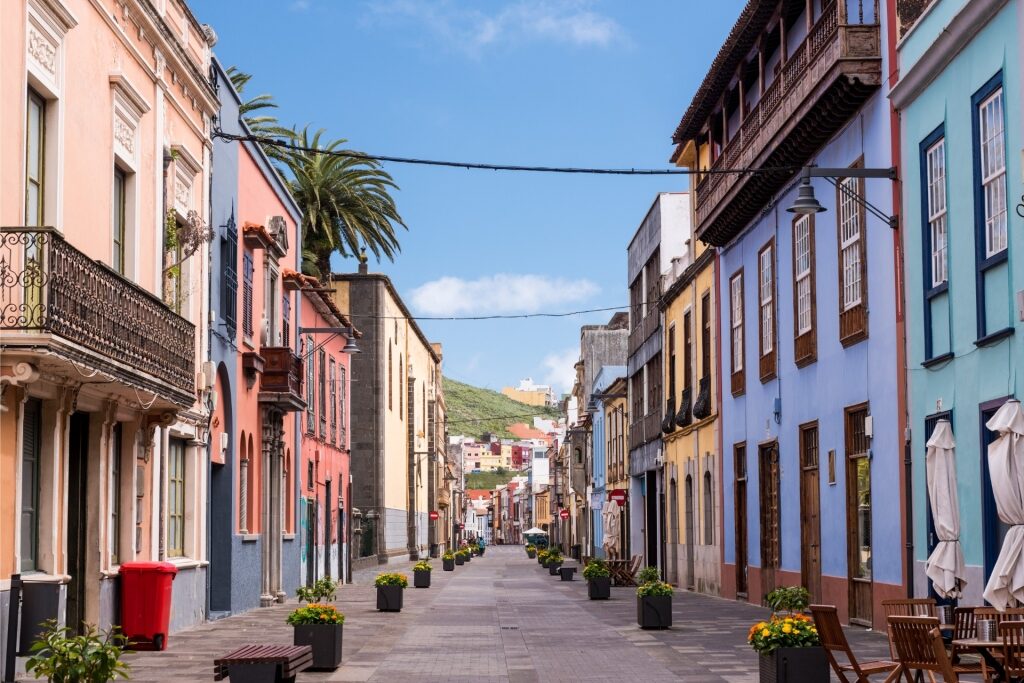
San Cristobal de La Laguna, Tenerife
From Playa de Mogán to the Maspalomas dunes, go beach hopping in Gran Canaria, and in Tenerife, split your day between exploring the capital, Santa Cruz de Tenerife, and the old town of San Cristobal de La Laguna.
Active Excursions
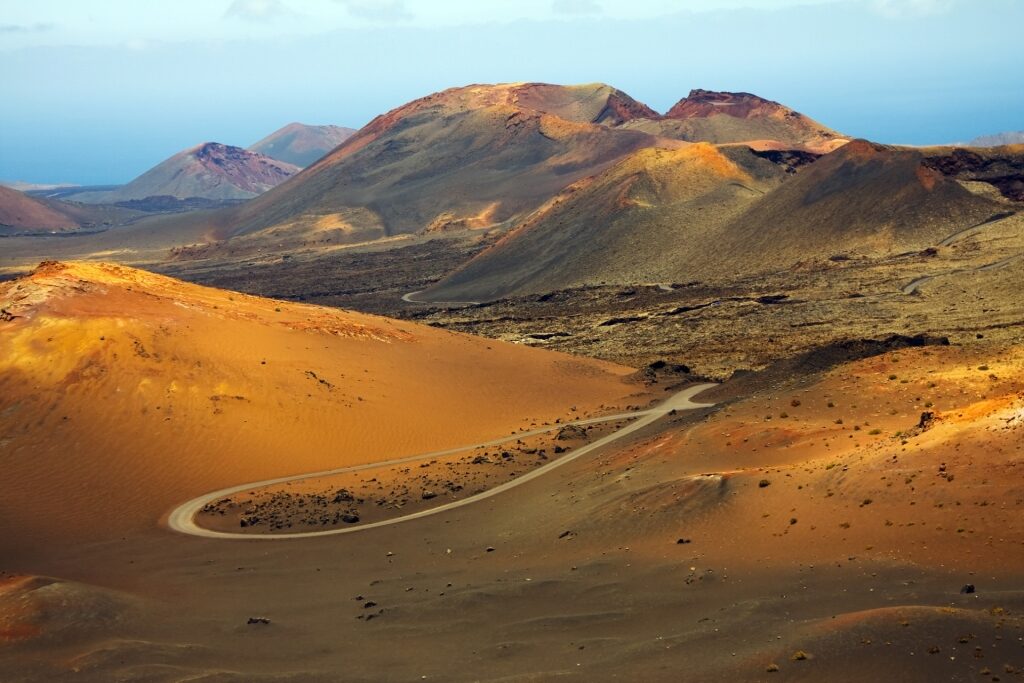
Timanfaya National Park, Lanzarote
The Canary Islands’ mild winter weather makes the archipelago perfect for more active excursions at this time of year.
Hiking in Lanzarote’s rousing Timanfaya National Park is one of the best things to do in the Canary Islands. This vast, colorful landscape was created following a series of volcanic eruptions between 1720 and 1736, and again in 1824. There’s no vegetation in the park, just the silhouette of jagged lunar-like terrain.
There are a number of trails in Timanfaya. Pick one to suit your ability, such as the 1.25-mile Tremensana Route. Reserve a place on this guided hike at the park’s Mancha Blanca visitor center or go for the Coastal Route, which can be accomplished independently or with a guide. Look out for sprigs of olive-green lichens, the only species that grows in Timanfaya, and the stark contrast of the sparkling blue ocean against Timanfaya’s dramatic red hues.
In Tenerife, you could go off-roading in Teide National Park or enjoy the thrills of Siam Park’s aqua park, including coiling water slides and adrenaline-pumping rapids.
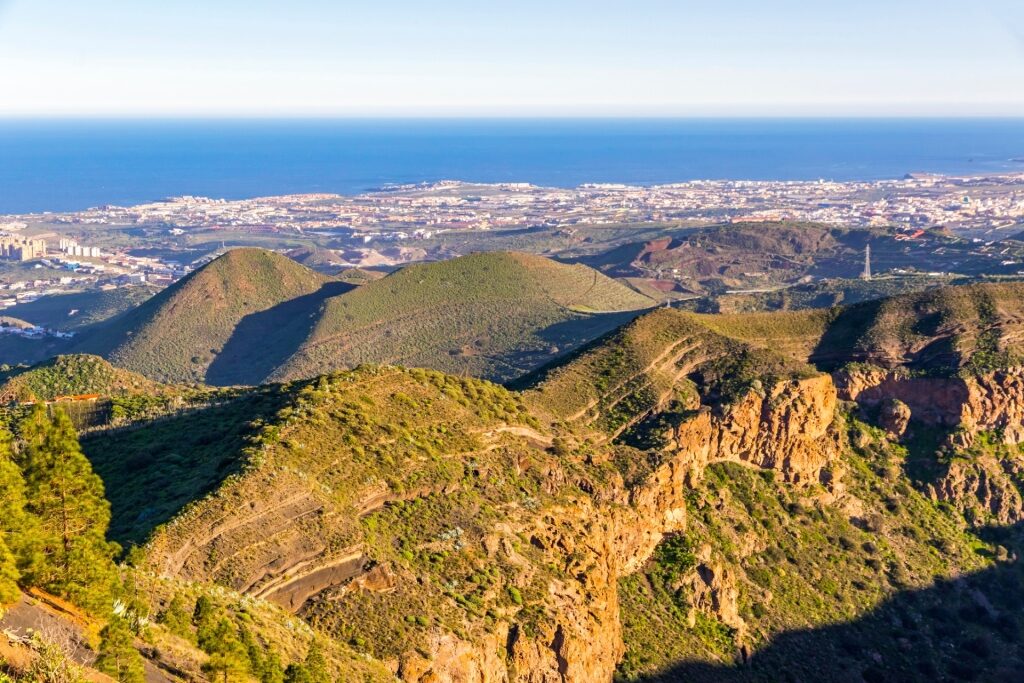
Caldera de Bandama, Gran Canaria
For more trekking, one of the best things to do in Gran Canaria is to visit Caldera de Bandama, an extraordinary spot near Las Palmas. Formed 5,000 years ago following a massive volcanic eruption, this colossal crater is covered with luscious plant life with a hiking route that’s almost two miles, taking in viewpoints, caves, and wild olive trees.
Surfing
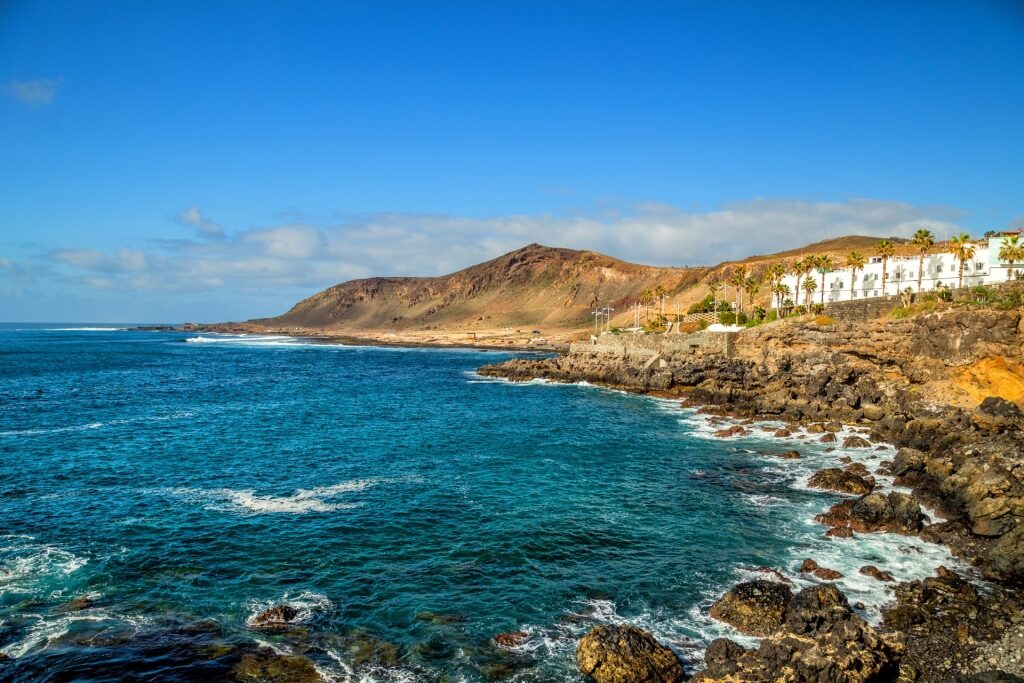
Playa del Confital in Las Palmas, Gran Canaria
The islands are pummeled by the sapphire waters of the Atlantic Ocean and it’s possible to surf year-round, although winter serves some of the best, most powerful waves. And if you’re not already a surfer, you could opt for a lesson with a pro or watch mesmerizing big waves from the shoreline.
In Las Palmas, Gran Canaria, Playa del Confital is one of the best beaches for surfing, with a surf school on nearby Las Canteras Beach that offers one- and two-hour lessons for all levels. In Tenerife, head south to Playa de las Américas, a resort that has hosted world surfing championships, or Playa de El Médano for a surf lesson. Or to simply rent a board and hit the waves.
In Lanzarote, go to Arrieta, a wonderful village of traditional whitewashed houses and tiny fishing boats near the caves of Jameos del Agua. Surf schools on Arrieta’s La Garita Beach offer surfboard and wetsuit rental, and lessons to suit all abilities.
Glorious Beaches
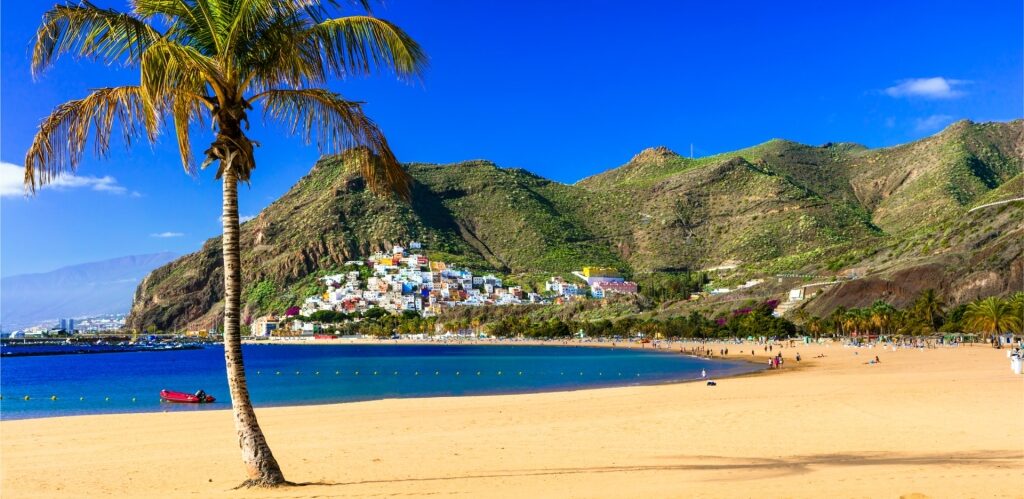
Las Teresitas, Tenerife
The Canary Islands has many alluring beaches; true showstoppers that unfurl for miles, featuring desert-like golden dunes, while others are volcanic, with crow-black sand.
On Tenerife, head to Las Teresitas near the capital of Santa Cruz. This dreamy, mile-long stretch curls in front of palm trees, with green-covered mountains in the distance.
To experience one of Tenerife’s dramatic volcanic beaches, head to Playa El Bollullo on the north coast.
El Bollullo is a soft, black-sand cove between dramatic rock formations, close to El Rincón’s verdant banana plantations. There’s a chiringuito, a small beach bar with bathrooms, and parking just above the beach.
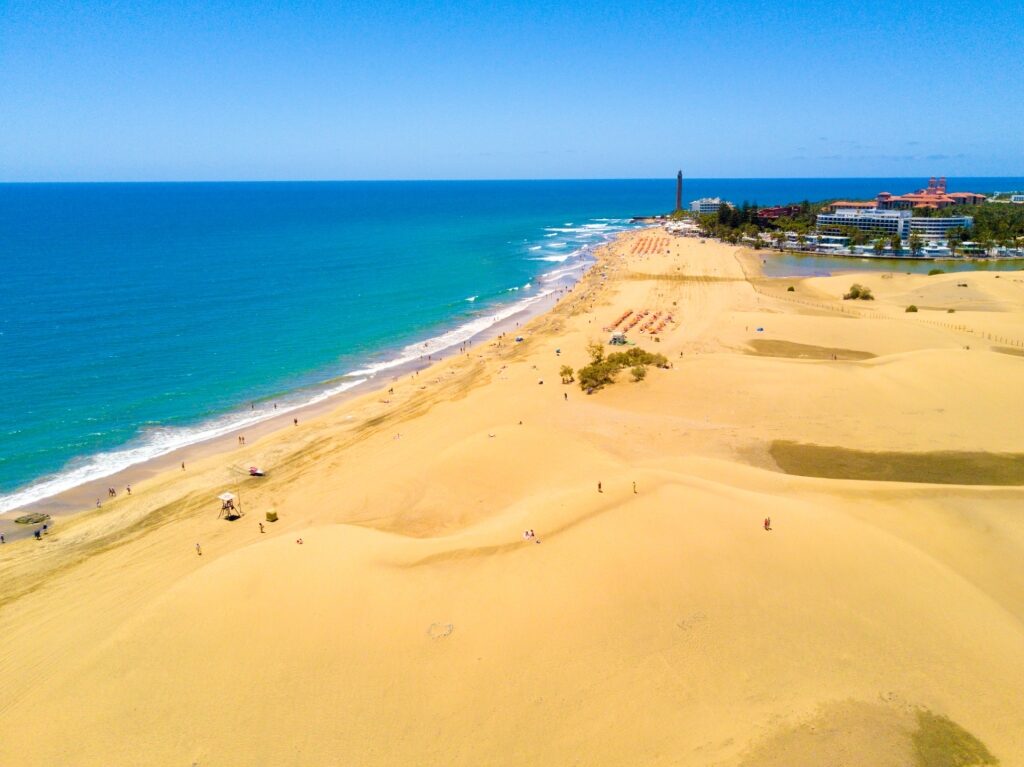
Maspalomas, Gran Canaria
On Gran Canaria, few beaches beat Maspalomas, with its flaxen sand dunes sweeping around the southern tip of the island. The beach has watersports and lounge chairs and is close to the bars and restaurants of Meloneras and Playa del Inglés. Split your time here between the shore and the sprawling Dunas de Maspalomas that flanks the four-mile beach. This photogenic natural reserve is made up of almost 1,000 acres of sand dunes, a palm grove, and a brackish lagoon.
Also on Gran Canaria, Las Canteras Beach is a blond two-mile beach with excellent facilities in the buzzy capital, Las Palmas de Gran Canaria. The water is clear and perfect for swimming and snorkeling.
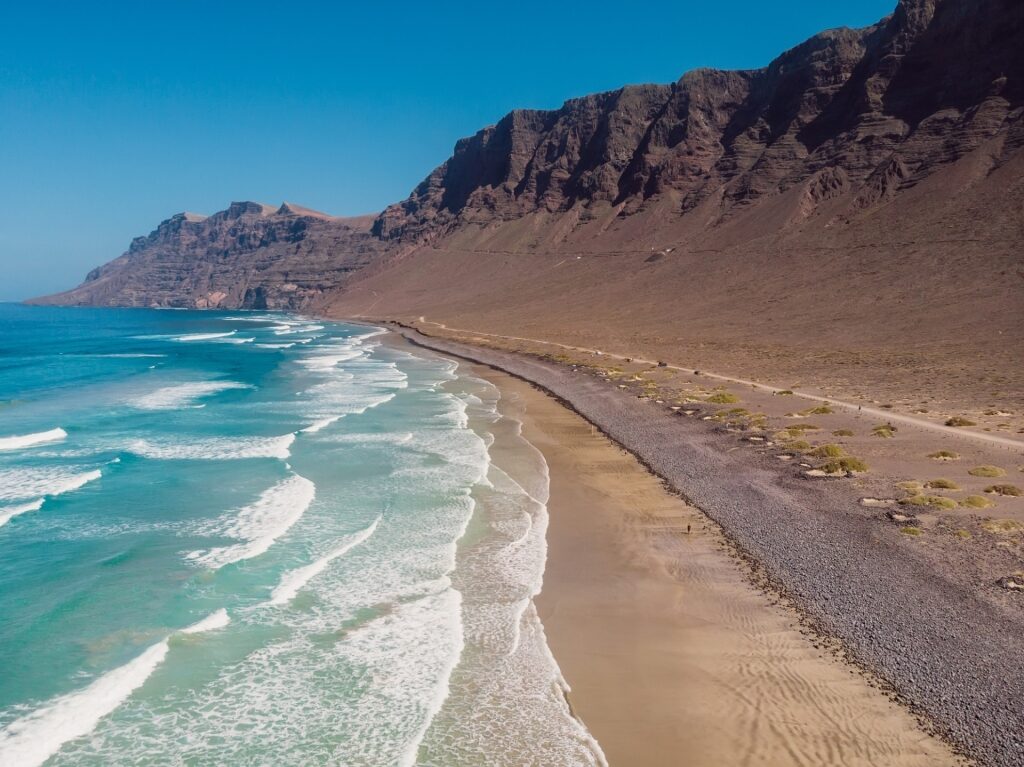
Famara Beach, Lanzarote
On Lanzarote, try Famara Beach on the north coast, which is loved by surfers for its wild waves and more remote feel. This gorgeous windswept spot has few crowds and few amenities—which is all part of its charm. In Lanzarote’s far south, Playa de Papagayo has a relaxed vibe, with inviting crystalline water and a lovely coastal restaurant, Be Papagayo, set just above the beach.
Whale & Dolphin Sightings
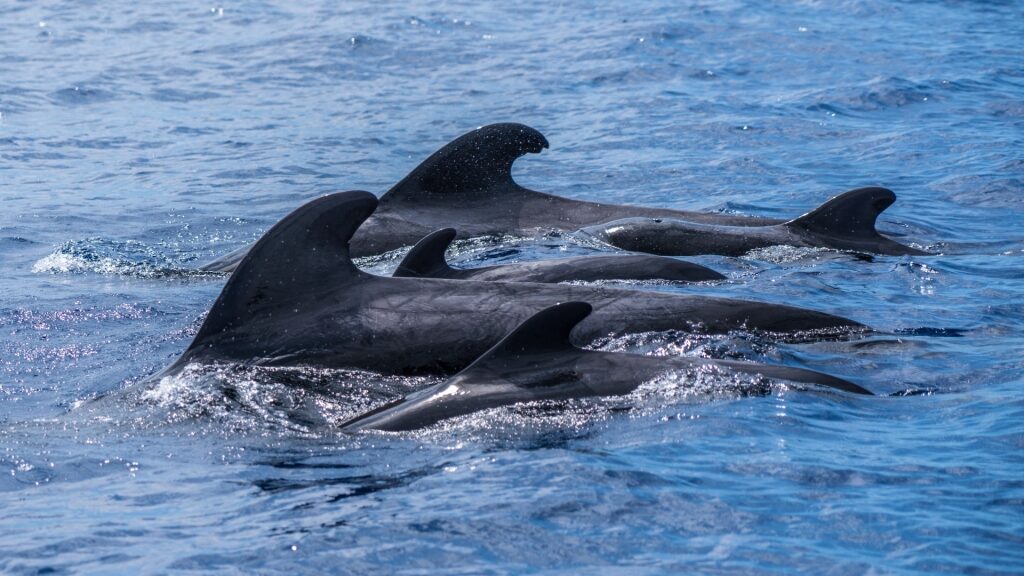
Pilot whales
Few things are as magical as seeing whales and dolphins in the wild and the Canary Islands is one of the best places in Europe where you can see them in winter.
A number of species can be seen year-round in the Canary Islands, including fin, pilot, and sperm whales. These gentle cetaceans can often be seen in the rich waters, not far from the shore, though a boat trip is often the best way to get a closer look.
Book a marine mammal-spotting trip with a licensed operator from Puerto Calero or Puerto Del Carmen in the east of Lanzarote, around a 15-20-minute drive from Arricife, the capital, with sea safaris typically lasting two to three hours.
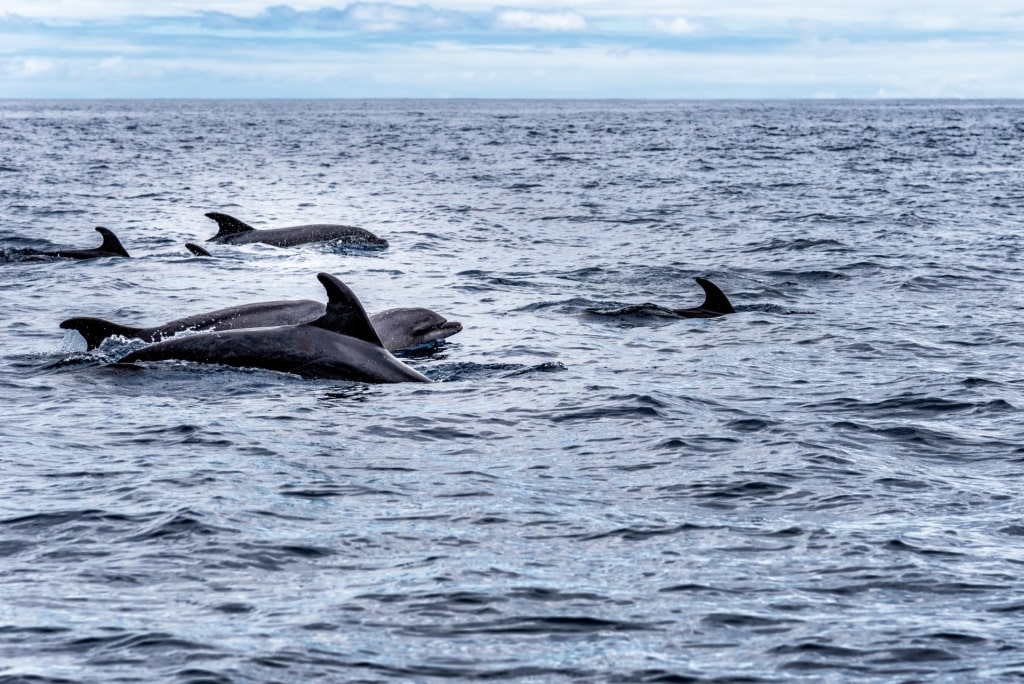
Bottlenose dolphins
One of the best things to do in Tenerife is to join a two-hour ecological tour from Puerto Colón. Among the many marine species found in the waters around Tenerife are bottlenose dolphins, orcas, and rough-toothed dolphins. Gaze at Tenerife’s rugged landscape, including soaring Mt. Teide, and from the sapphire water, from just a few miles offshore, while also looking out for seabirds and turtles.
In Gran Canaria, you could join a glass-bottom catamaran from Mogán, in the south, giving you a chance to see dolphins swimming under the boat.
Read: Best Places to Go Whale Watching in the World
Snow-Capped Mt. Teide
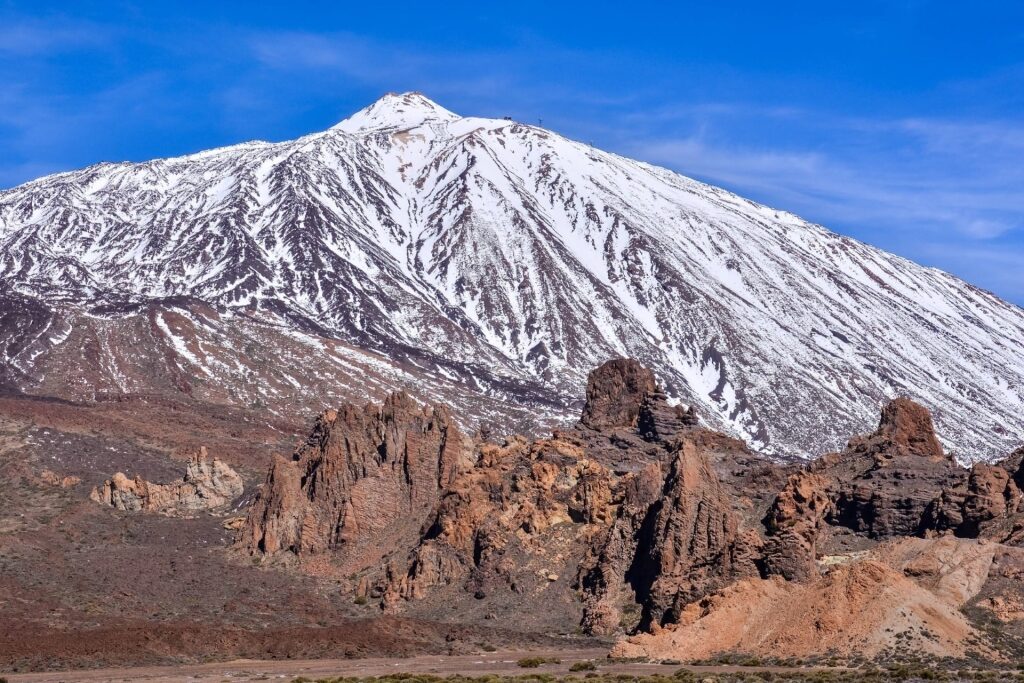
Mt. Teide, Tenerife
Tenerife’s mighty Mt. Teide within Teide National Park stands at a cloud-piercing 12,198 feet, making it the highest peak on Spanish soil. It’s also the world’s third-tallest volcanic structure. During winter you’ll likely see the summit capped in snow, adding to Teide’s cinematic appeal.
You could take a leisurely cable car ride to an altitude of 11,663 feet, which leads to three trails around the summit, including the La Fortaleza trail for dazzling views of the north side of the island. On a clear day, the southern trail reveals views of neighboring islands, including La Gomera, to the southwest.
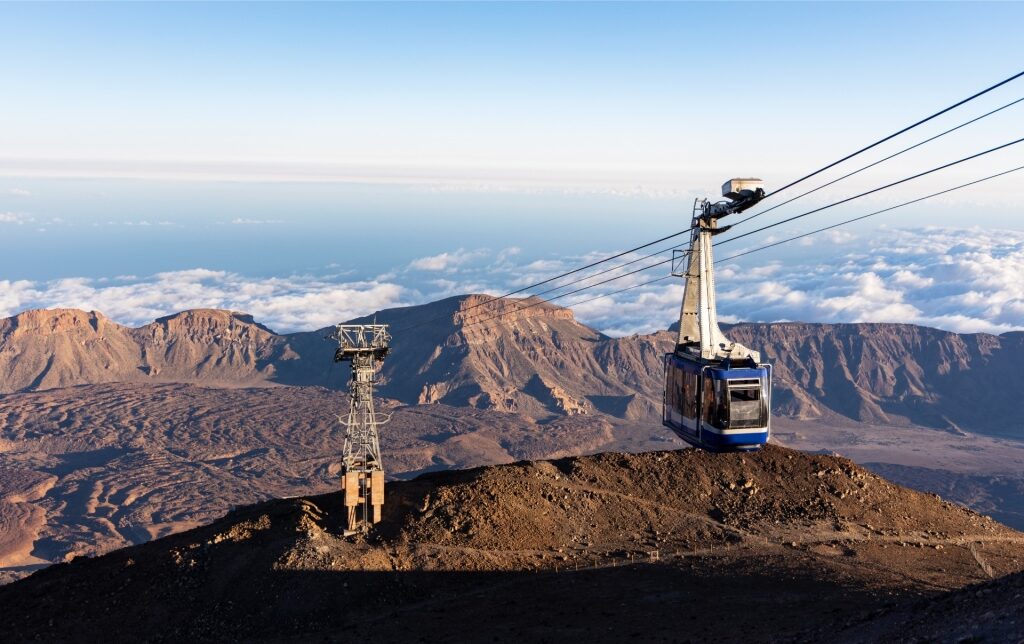
Cable car in Teide National Park, Tenerife
There’s more to explore within this UNESCO World Heritage Site, including jaw-dropping volcanic rock formations, deep craters, and ancient lava fields. Pico Viejo is a cone-shaped volcano that rises 10,184 feet, to the southwest of Mt. Teide. One of the park’s most awe-inspiring landmarks are the ochre-hued Garcia Rocks that rise up from the rugged plain.
There is a network of trails and lookout points within the park, with routes you can take by car or on foot, and the El Portillo Visitor Center, with an exhibition, restaurant, and bathrooms. Dress up warm to ascend Teide in winter, as the temperature at the summit can be several degrees lower than that at sea level.
Read: Best Places to Go Hiking in Spain
Fewer Crowds
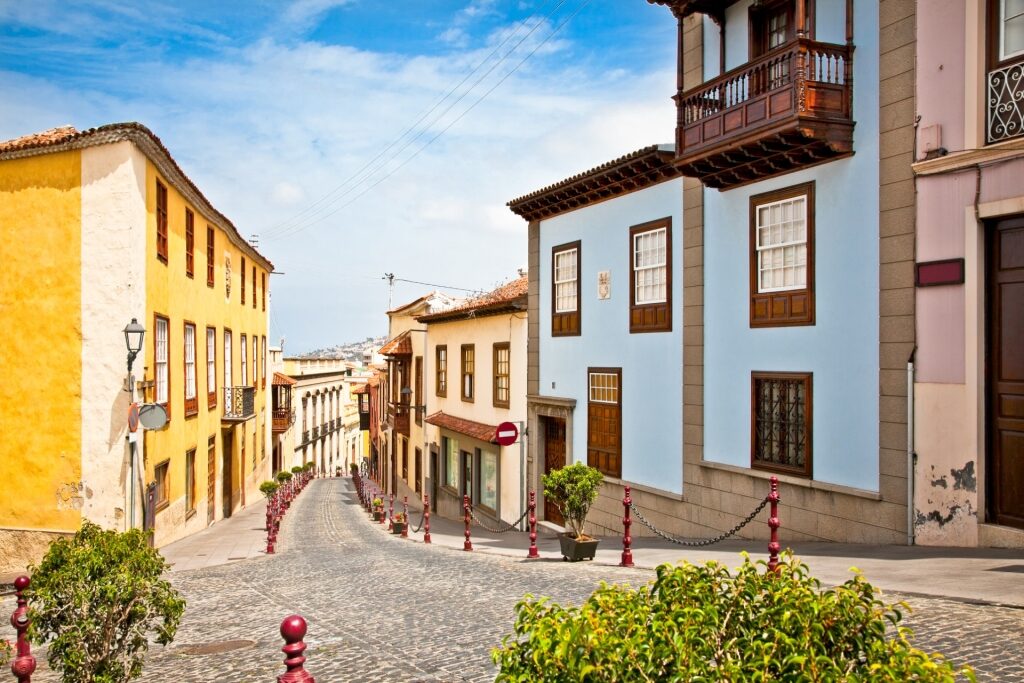
La Orotava, Tenerife
The Canary Islands in the winter see fewer crowds, which is a boon for travelers looking to explore the archipelago’s slow-paced old towns.
Stroll around pretty La Orotava in the north of Tenerife. There’s a 17th-century convent that’s home to the Latin American Craft Museum of Tenerife and the exquisite 1632-built Casa de los Balcones, featuring hand-carved timber balconies.
You’ll want to spend plenty of time in Tenerife’s pastel-hued San Cristóbal de La Laguna, too. The first city in the Canary Islands, its linear street layout is packed with churches and historic buildings. In Vegueta, Gran Canaria, enjoy coffee in a palm tree-lined square and gaze at the 16th-century Santa Ana cathedral.
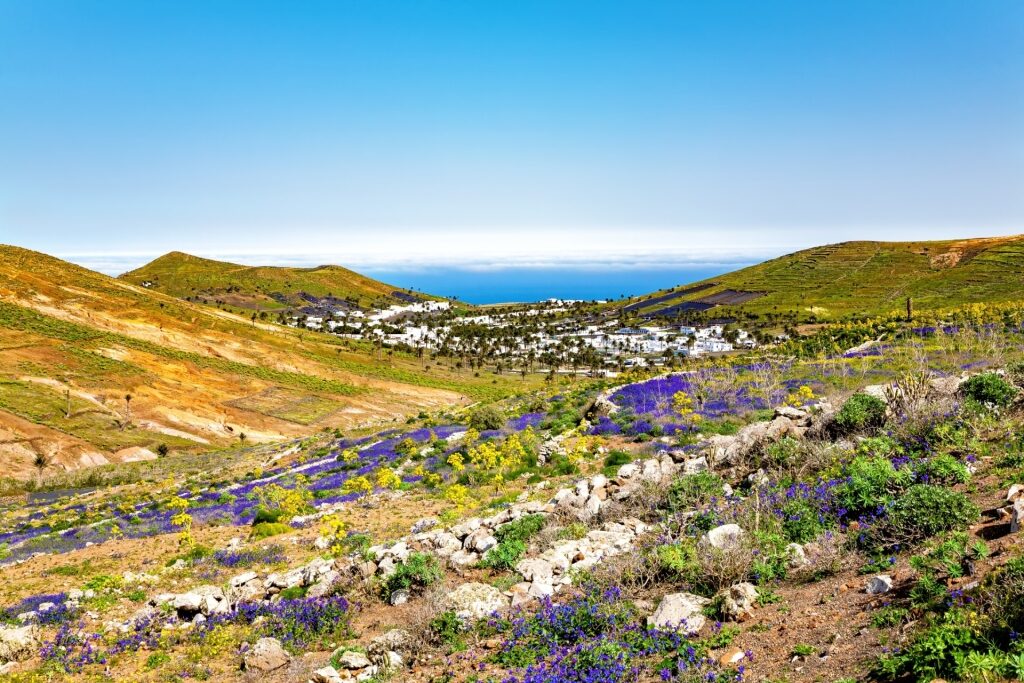
Haria, Lanzarote
One of the best things to do in Lanzarote is to visit the enchanting village of Haria. Its sugar-cube houses are nestled in an area known as “the valley of the thousand palm trees” for its oasis-like palm grove. Haría is also home to Casa Museo de César Manrique, a museum in the former home of Canarian modernist artist and architect, César Manrique.
Holiday Festivities

Las Canteras Beach, Gran Canaria
Visit the Canary Islands during December and early January, and you’ll get a glimpse of the islands’ holiday festivities, particularly around the capital cities and larger towns.
On Gran Canaria’s Las Canteras Beach, there is a breathtaking nativity scene with sand sculptures carved into the golden shore. The display uses 2,000 tons of sand to create the nativity scene on the northern side of the beach.
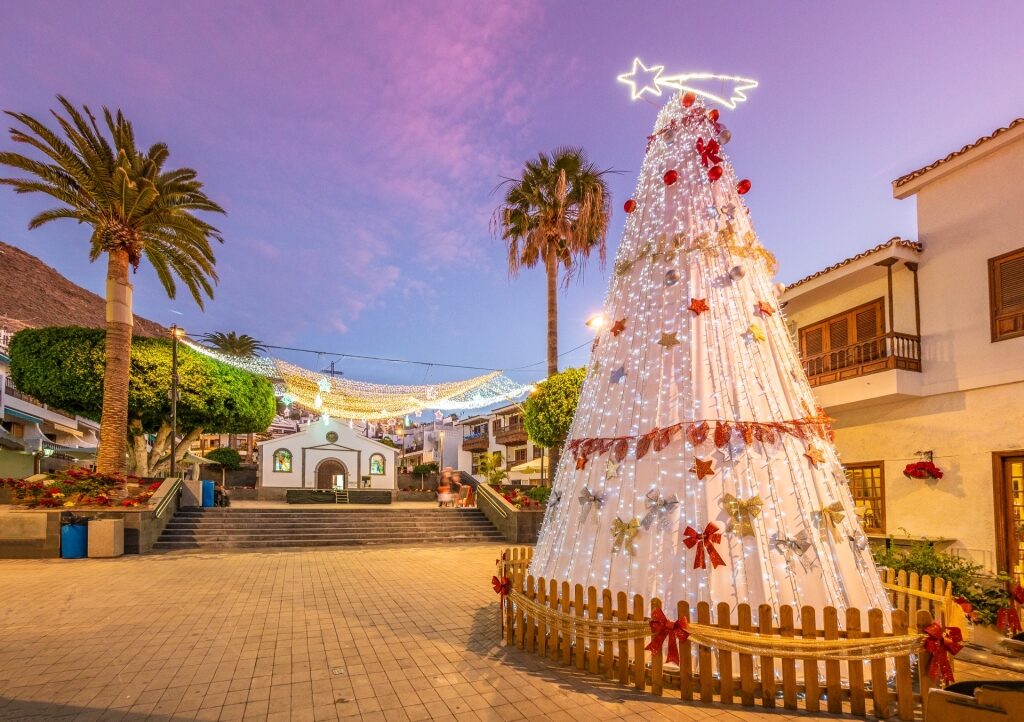
Tenerife
San Cristóbal de La Laguna in Tenerife hosts a Christmas market, while the town is lit with mesmerizing twinkling lights through the festive season.
Santa Cruz de Tenerife has a regular holiday-season market where you can pick up holiday gifts and thoughtful souvenirs, from locally-made jams to Christmas tree ornaments and handmade jewelry.
Try Teguise Market in Lanzarote and Teror market in Gran Canaria, which also celebrate with lights, decor, and markets.
Lush Forests
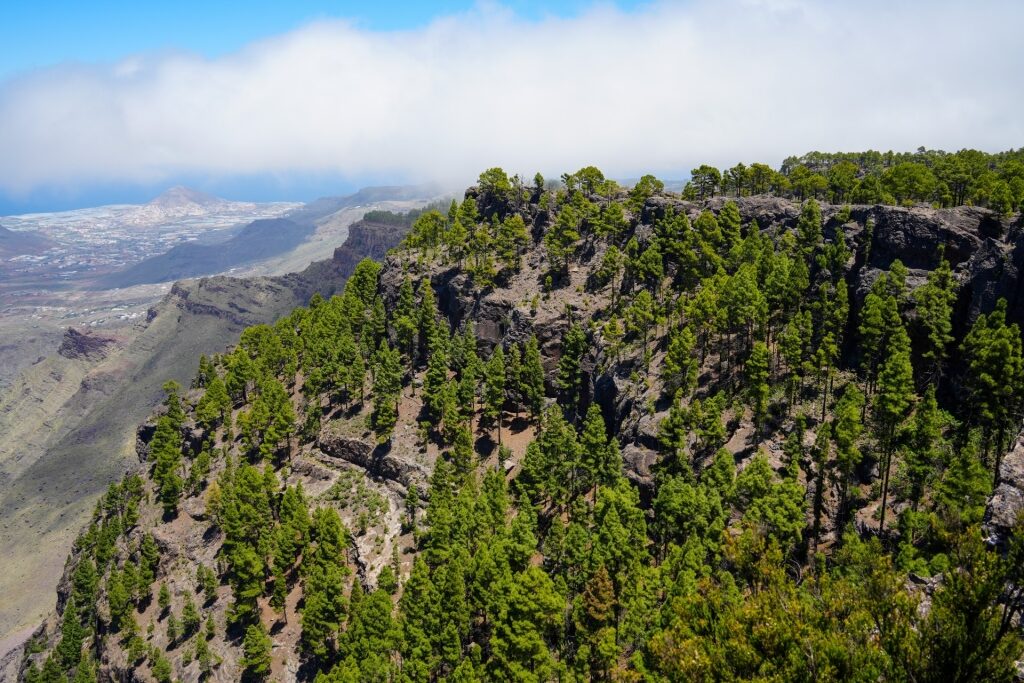
Tamadaba Natural Park, Gran Canaria
During winter, the Canary Islands’ luscious forests are bursting with life, among them Gran Canaria’s Tamadaba Natural Park. This UNESCO Biosphere Reserve is home to an ancient forest of indigenous Canary pine trees that cling to Atlantic cliffs.
On Tenerife, the mystical Anaga is a serrated mountain range, with deep ravines carpeted by a laurel forest. This subtropical forest is an ethereal retreat, with shafts of natural light streaming into the tangle of broadleaf trees and emerald ferns.
Anaga has a small visitor center and museum a few miles north of San Cristóbal de La Laguna. The museum is dedicated to the flora and fauna of Anaga Rural Park, including geckos, lizards, juniper, and dragon trees.
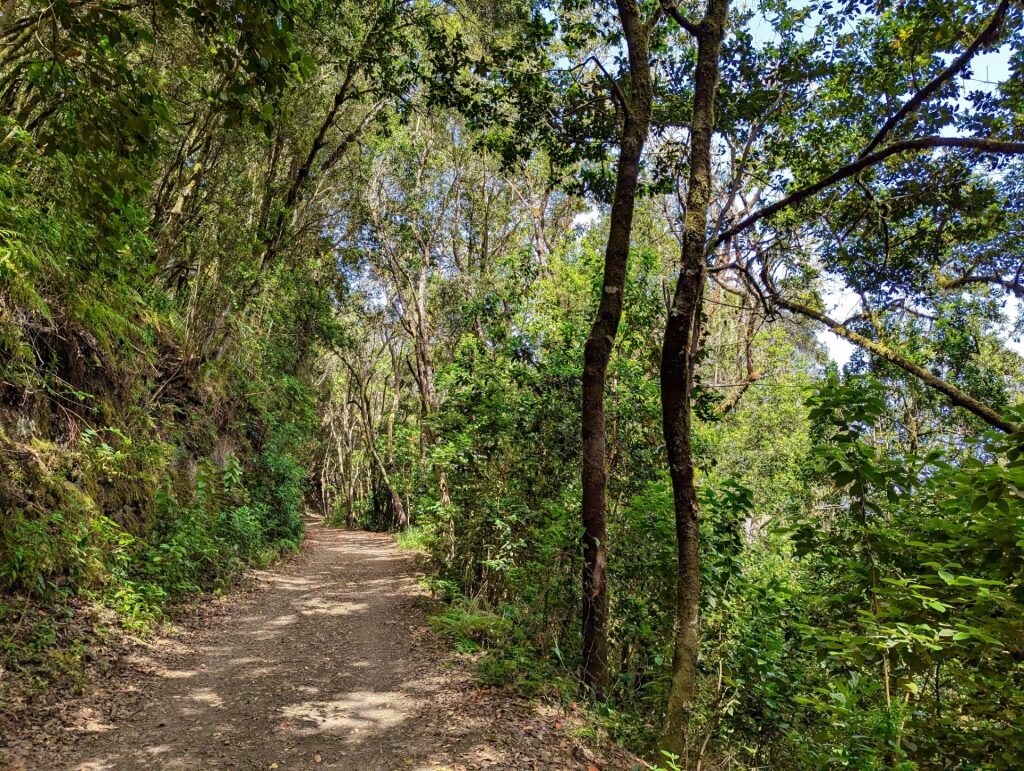
Teno Rural Park, Tenerife
You could also delve into the northwest corner of Tenerife and the striking Teno Rural Park. This green mass of valleys and mountains was once a separate island and is home to a habitat of laurel forest and towering cacti.
Sun-Dappled Wineries
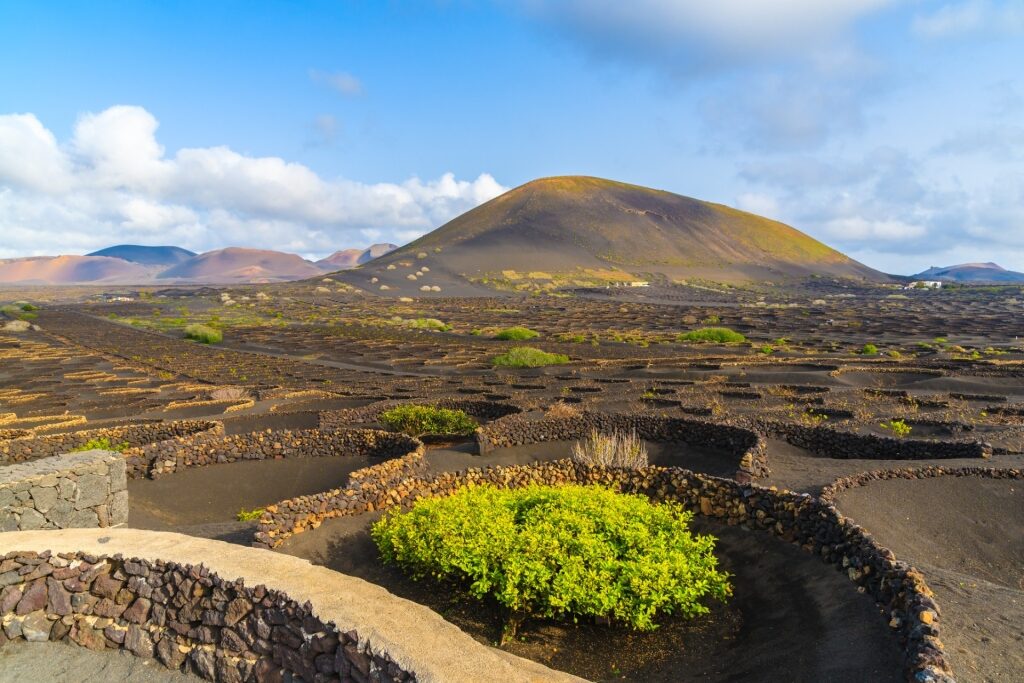
Geria Valley, Lanzarote
One of the great things about the Canary Islands in winter is that unlike many other wine-growing regions, you can still visit vineyards and sample their homegrown grapes, regardless of the season.
Oenophiles adore Geria Valley. The region’s rich, ebony-colored soil produces an abundance of delicious white and sweet wines through a unique cultivation process that sees vines grown in cone-shaped hollows in the ground, sheltered from the wind.
Sample Geria’s elegant wines on a tour and tasting at Bodega La Geria, Bodegas Rubicón, and Bodega Stratvs. See how the grapes are grown and sip on the pale yellow malvasia wine variety, with a backdrop of Lanzarote’s magnificent volcanic landscape.
Read: Best Things to Do in Spain
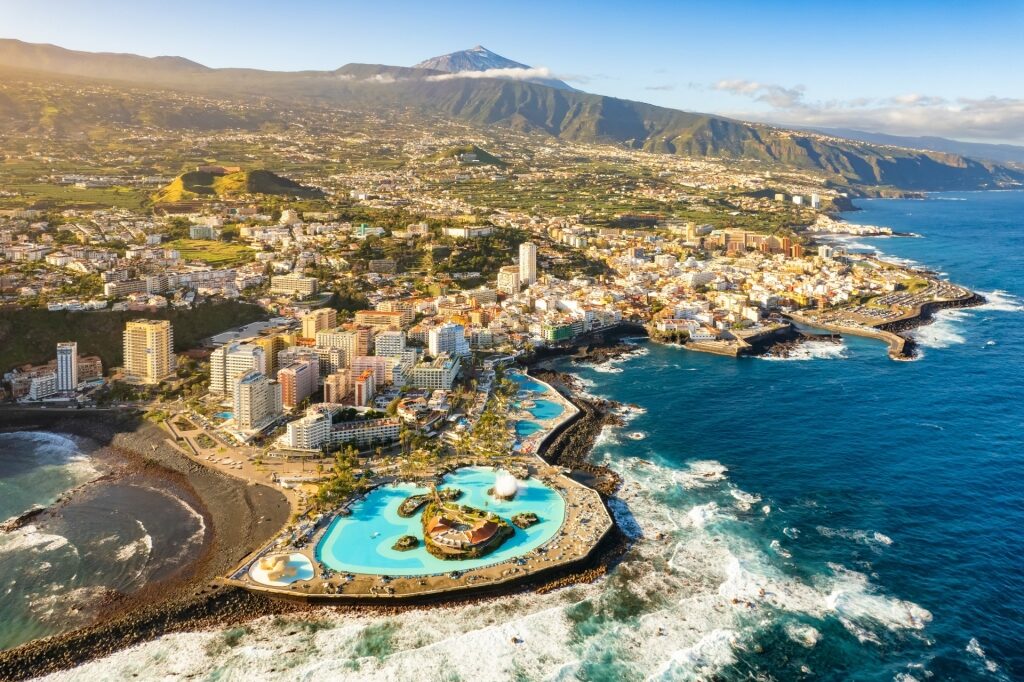
Tenerife
Ready for some winter sunshine? Browse Celebrity’s cruises to the Canary Islands and book your next adventure.
